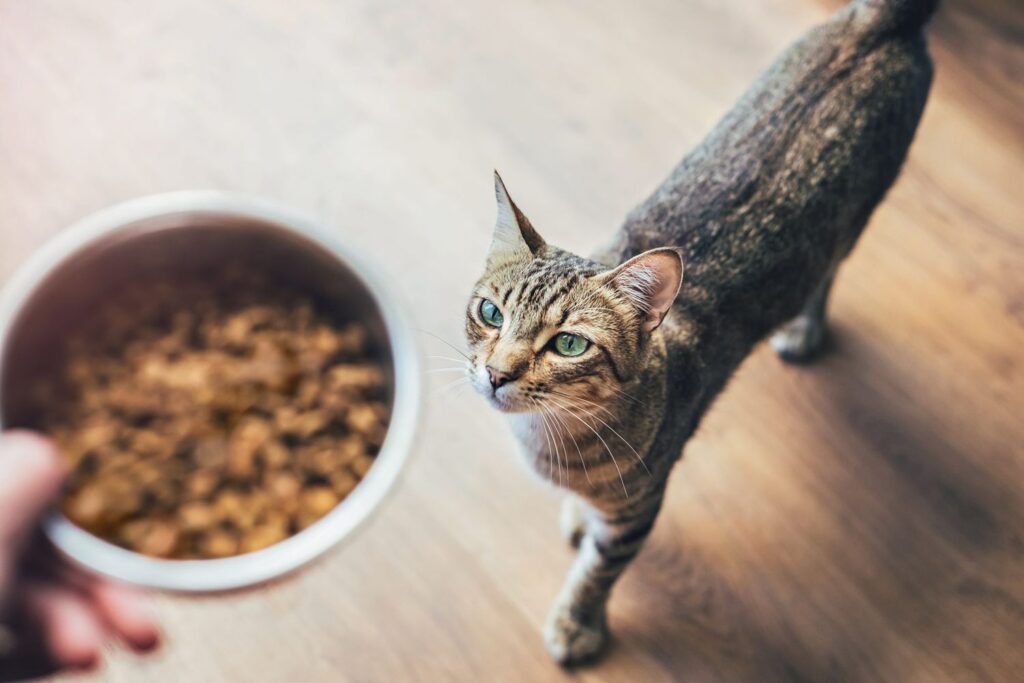Bringing a new kitten into your home is an exhilarating experience. Their playful antics, boundless energy, and irresistible charm quickly win your heart. But as kittens grow, their nutritional requirements evolve, and a critical question emerges: When is the ideal moment to shift your kitten from their initial diet to adult cat food? In this comprehensive guide, we’ll delve into the essential considerations, expert insights, and tips to facilitate a seamless transition for your beloved feline companion.
What to Consider Before Switching
The first pivotal factor in determining when to switch your kitten’s food relates to their age and growth. Typically, kittens experience rapid growth during their first year. Most experts recommend maintaining them on kitten-specific food until they reach the age of approximately one year. However, it’s important to bear in mind that each cat is an individual, and their growth rate can differ. A veterinary consultation can help assess when your kitten is ready for adult cat food.
Another critical aspect to consider is your kitten’s weight and size. Kittens should reach a healthy weight relative to their size before transitioning to adult food. A general guideline is that they should weigh around 1.5 to 2 pounds (approximately 0.7 to 0.9 kilograms). So, if your kitten weighs around 3 pounds (approximately 1.4 kilograms), they may be ready for the switch. Keep in mind that these figures are approximate, and your veterinarian can provide more precise recommendations based on your kitten’s specific weight and size.
Also, it’s important to note that kittens can have growth spurts at different stages, which might affect when they are ready for adult cat food. Your veterinarian can help determine if your kitten’s weight aligns with their growth rate and size, ensuring a healthy transition. Always consult your vet for personalized advice tailored to your feline friend’s unique development.
An often overlooked yet vital element of the transition process is your kitten’s dental development. Kittens usually begin losing their baby teeth at around three months and continue to replace them with adult teeth. As their teeth mature, they become better equipped to handle the texture and density of adult cat food. Dental health is integral to a cat’s overall well-being, so monitoring their dental development can be an important factor in deciding when to make the switch.
Understanding your kitten’s changing nutritional needs is key. Kitten food is formulated to support their rapid growth, providing a higher concentration of essential nutrients and calories. However, as they approach adulthood, their growth rate slows, and they require fewer calories. Adult cat food is designed to meet the nutritional needs of a fully grown cat. It’s essential to strike a balance between nourishing your kitten’s growth and avoiding overfeeding, which can lead to obesity.
One of the most reliable approaches to determine the right time for transitioning your kitten is to consult your veterinarian. They can assess your kitten’s unique development, taking into account factors such as age, weight, dental health, and individual growth rate. Your vet can offer personalized recommendations and guidelines for a seamless transition. They may also recommend specific brands or types of adult cat food thatsuit your kitten’s needs.
Once you’ve consulted your veterinarian and received the green light for the transition, it’s important to change your kitten’s diet gradually. Sudden shifts in diet can lead to digestive upset, so introducing the new food alongside the old food over the course of about a week is advised. Start with a small proportion of adult cat food mixed with their kitten food and gradually increase the ratio until they’re exclusively eating adult food.
Throughout the transition, keep a close eye on your kitten for any signs of allergies or food sensitivities. While switching to adult food, some kittens may experience mild gastrointestinal issues. These issues often resolve as their digestive system adapts to the new diet. However, if you observe persistent symptoms such as diarrhea, vomiting, or changes in behavior, consult your veterinarian.
It’s crucial to ensure your kitten stays hydrated during the transition and beyond. Fresh water should always be available to your cat, regardless of their age or dietary choices. Remember that a healthy cat drinks a sufficient amount of water to support their kidney function and overall health.
When selecting adult cat food, prioritize quality. Opt for reputable brands known for their nutritional content and use of high-quality ingredients. The best adult cat foods are designed to meet the specific dietary needs of adult cats, which differ from those of kittens. Consider whether you prefer dry kibble or wet canned food, as both options offer their own advantages.
If your kitten has specific dietary considerations, such as allergies or sensitivities, your veterinarian may recommend specialized adult cat food to accommodate these needs. These foods are formulated to address various health concerns, such as allergies, urinary health, or weight management.
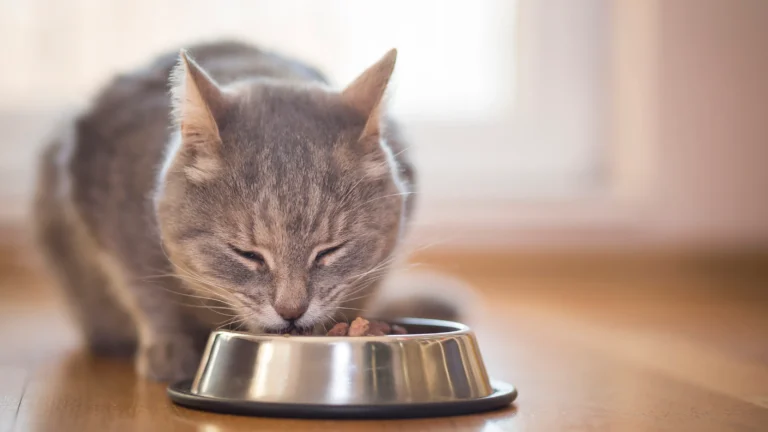
Choosing the Right Adult Cat Food
- Protein Content: High-quality protein is a cornerstone of any cat’s diet. Look for cat food with animal-based protein sources like chicken, turkey, or fish. Protein content should typically make up at least 26-30% of the food.
- No Fillers: Avoid cat foods with excessive fillers like corn, wheat, and soy. These ingredients don’t provide essential nutrients and can lead to obesity and digestive issues.
- Omega-3 Fatty Acids: These are beneficial for your cat’s skin, coat, and overall health. Look for foods with added sources of Omega-3 fatty acids like fish oil.
- Low Carbohydrates: Cats are obligate carnivores, which means their bodies are designed to digest animal-based proteins, not carbohydrates. Look for cat food with a lower carbohydrate content.
- A Trusted Brand: Choose a well-established cat food brand known for producing high-quality, balanced meals. Your veterinarian can recommend specific brands or formulas tailored to your cat’s health requirements.
Best Wet Cat Foods:
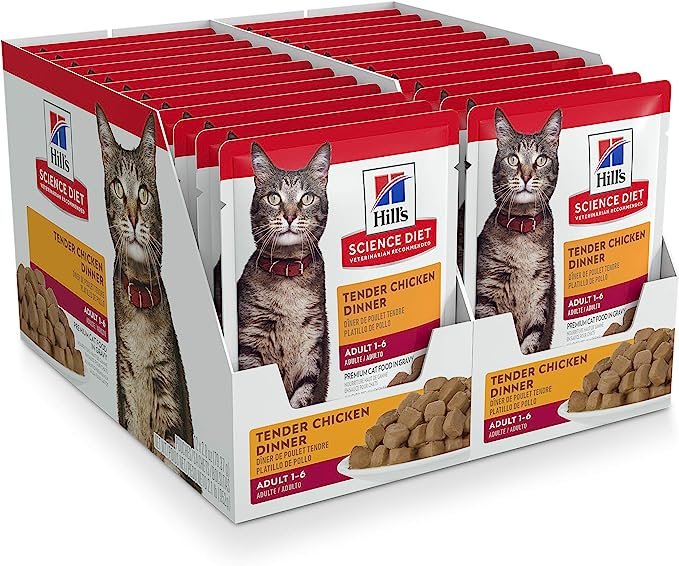
Hill's Science Diet Adult Tender Chicken Dinner
This cat food is formulated to provide precisely balanced nutrition for adult cats. It’s made with high-quality ingredients and is easy to digest.
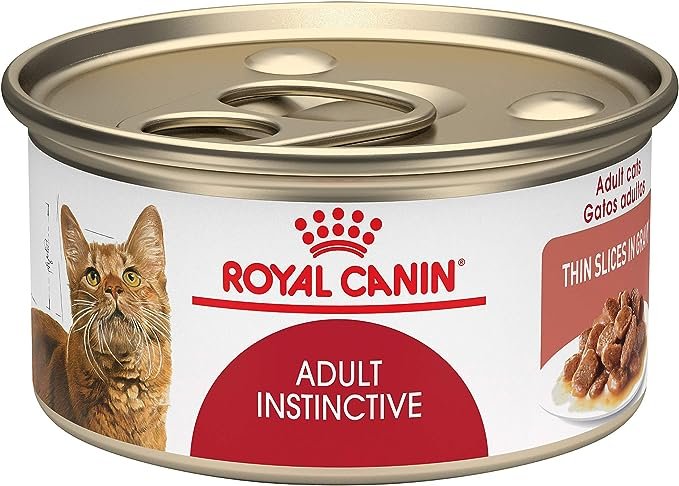
Royal Canin Adult Feline Health Thin Slices in Gravy
These thin slices of meat in gravy are both delicious and nutritious. They provide essential nutrients for your cat’s overall well-being.
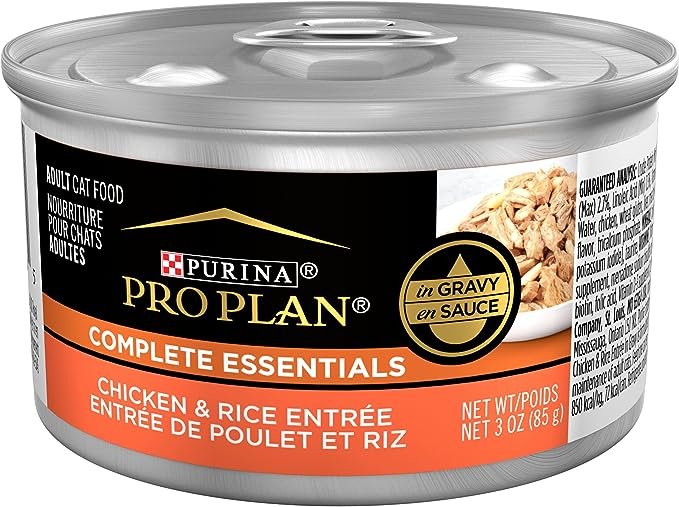
Purina Pro Plan Savor Adult Chicken and Rice Entree
This cat food features real chicken as the primary ingredient and is rich in protein. It supports muscle mass and overall health.
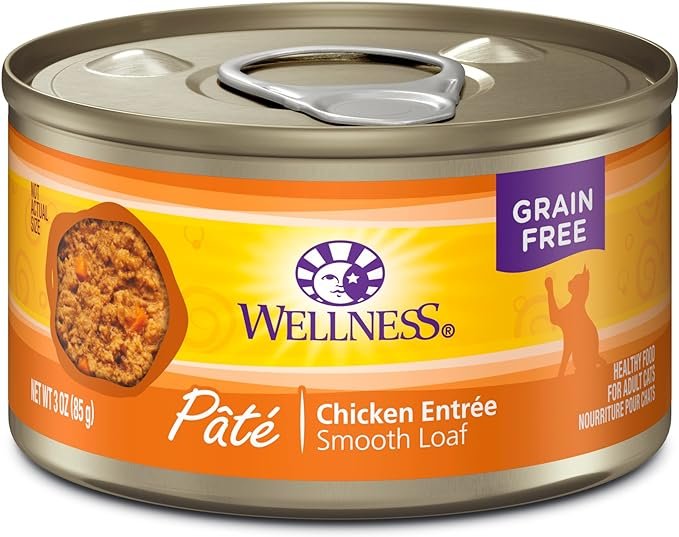
Wellness Complete Health Pate Chicken Entree
Wellness Complete is known for its high-quality ingredients and great taste. This pate-style cat food is highly palatable and easy to eat.
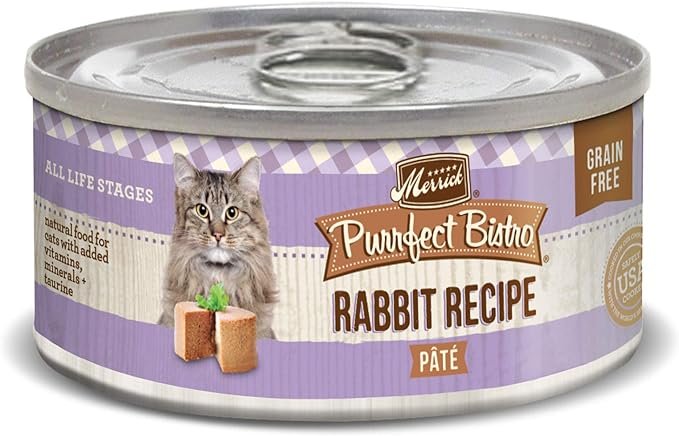
Merrick Purrfect Bistro Grain-Free Rabbit Pate
Merrick offers grain-free options for cats that may have sensitivities. It’s packed with protein and healthy fats for an active adult cat.
Best Dry Cat Foods:
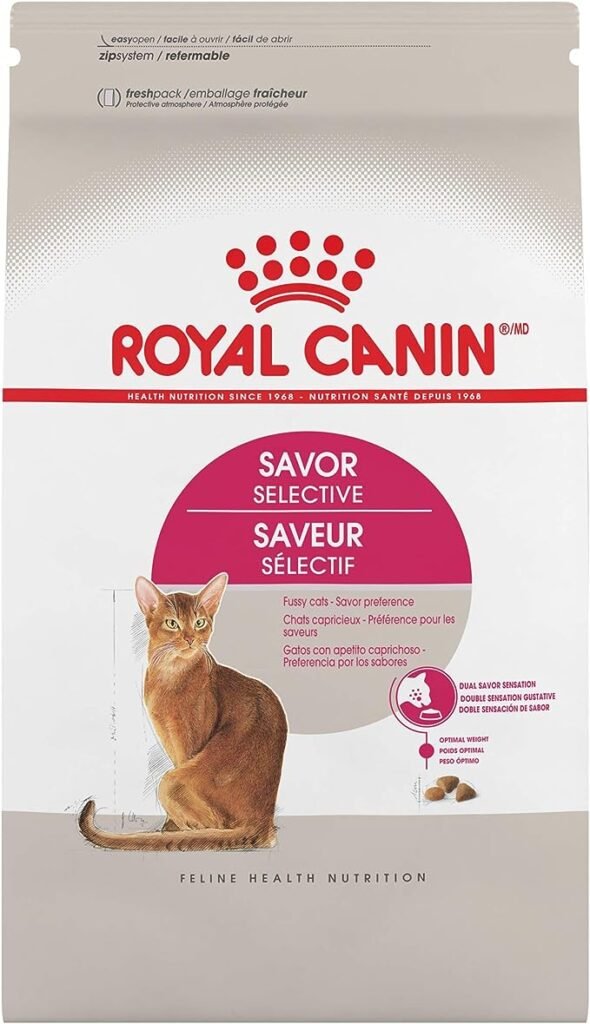
Royal Canin Feline Health Nutrition Dry Food
This dry cat food is specifically formulated for adult cats. It offers precise nutrition and supports overall health.
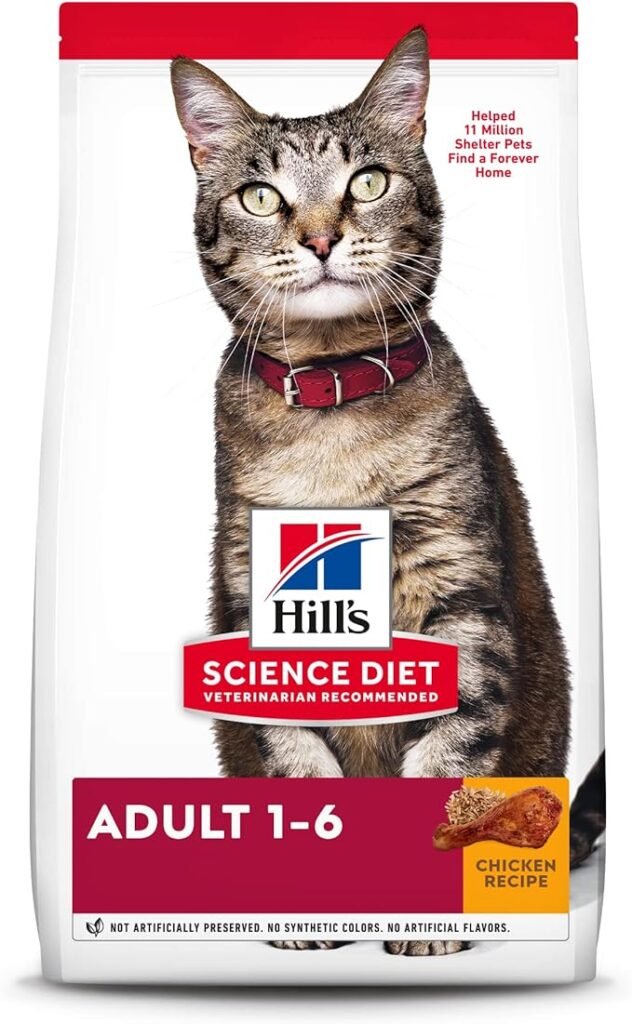
Hill's Science Diet Adult Dry Cat Food
This dry cat food provides a balanced diet with high-quality protein to maintain muscle health and an ideal body weight.
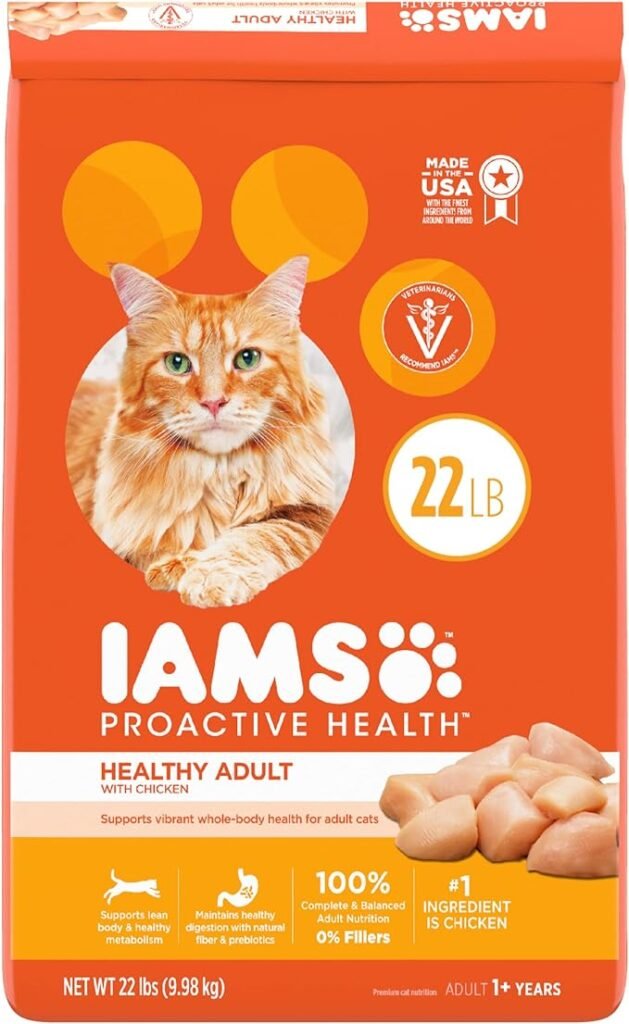
Iams ProActive Health Adult Dry Cat Food
Iams is a trusted name in pet food. Their dry cat food is rich in chicken flavor and protein, promoting overall health.
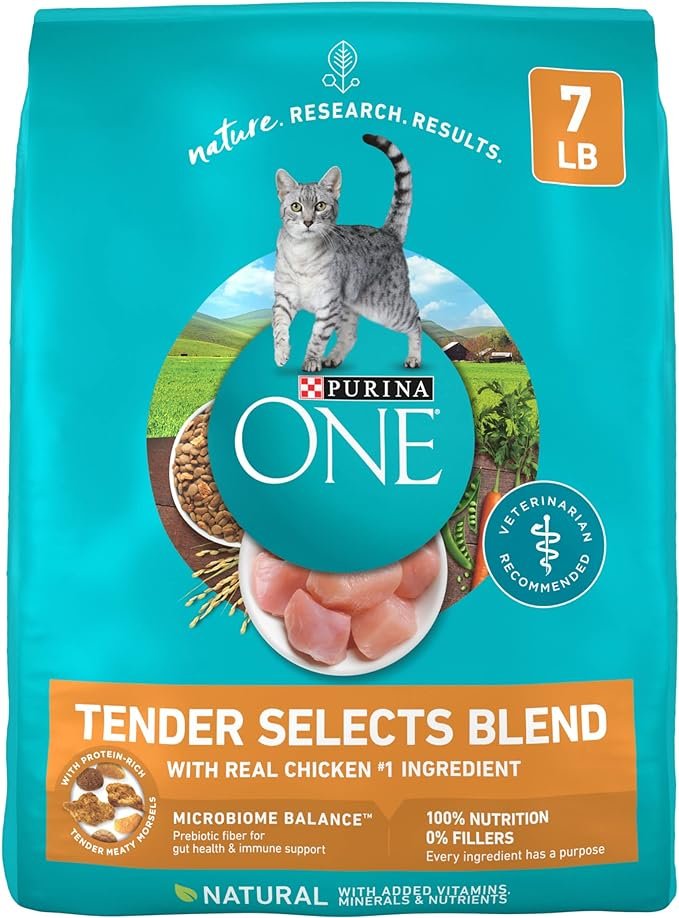
Purina ONE Tender Selects Blend Adult Dry Cat Food
Purina ONE offers a high-protein formula that aids in maintaining strong muscles and a healthy weight.
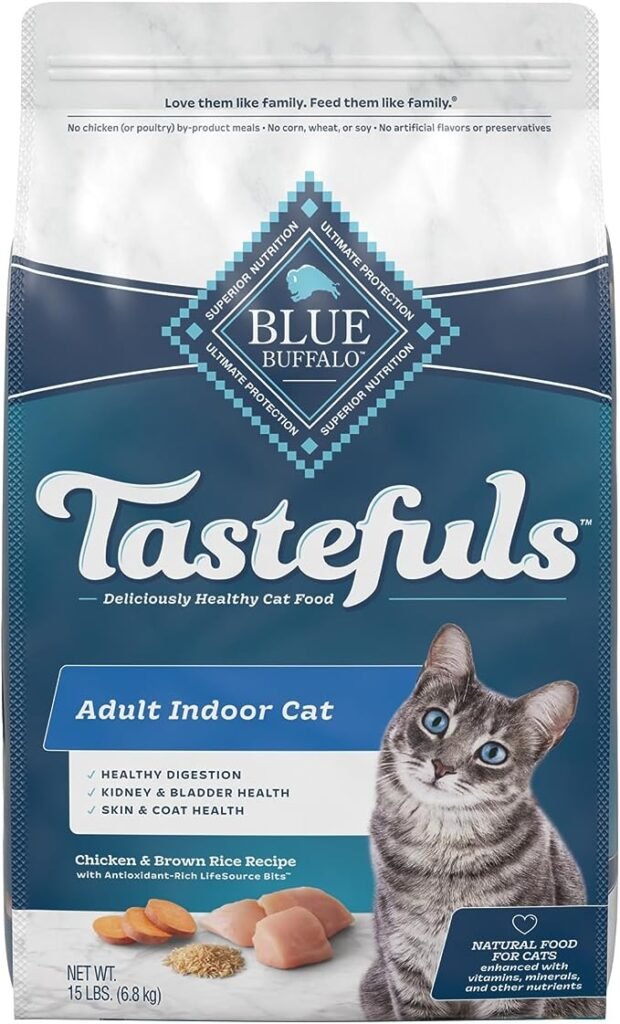
Blue Buffalo Adult Indoor Health Chicken & Brown Rice Recipe
If your cat is an indoor feline, this cat food is designed to support their specific needs, including hairball control and weight management.
Transitioning your kitten to adult cat food is a milestone in their development. Understanding the optimal time and method for making this shift is vital to your cat’s long-term health and happiness. By considering factors such as age, growth, dental development, and nutritional needs, and consulting your veterinarian for tailored guidance, you can ensure a smooth transition that supports your feline friend’s well-being. Remember to monitor your kitten during the process, provide ample hydration, and select high-quality adult cat food to ensure a healthy and contented transition into adulthood.

